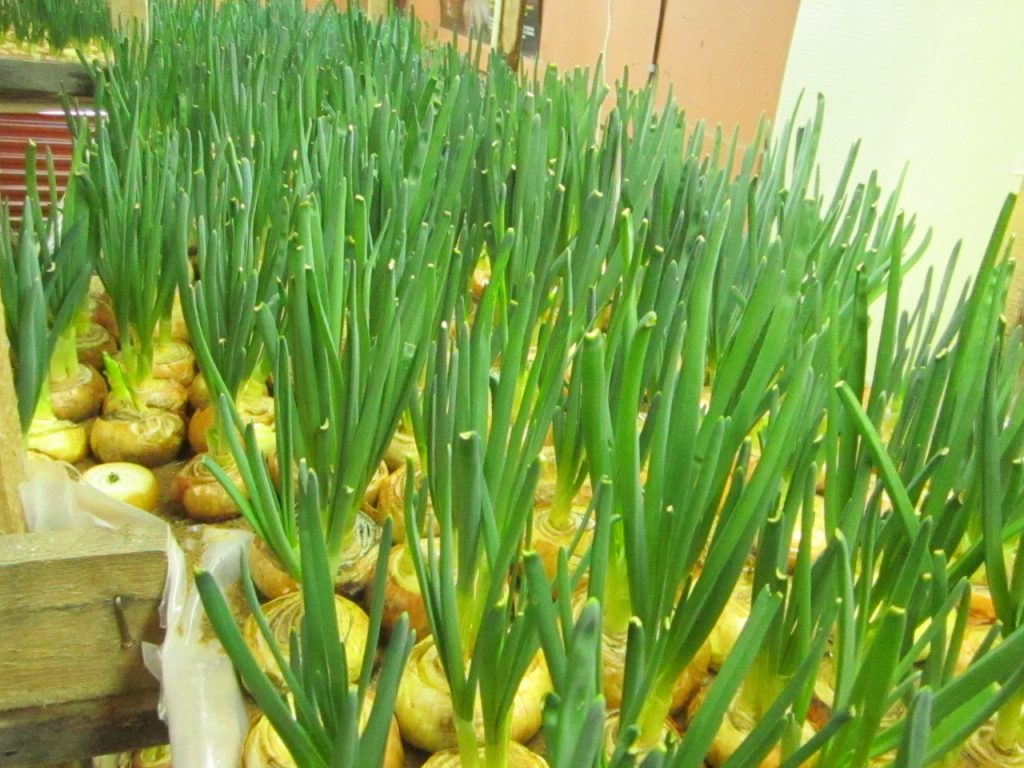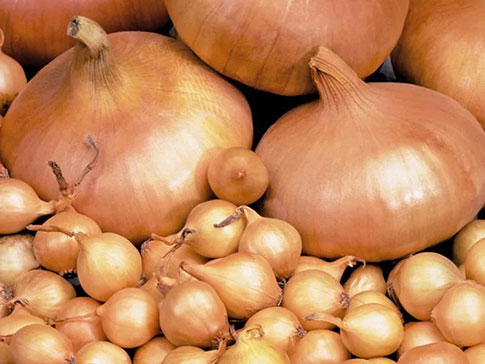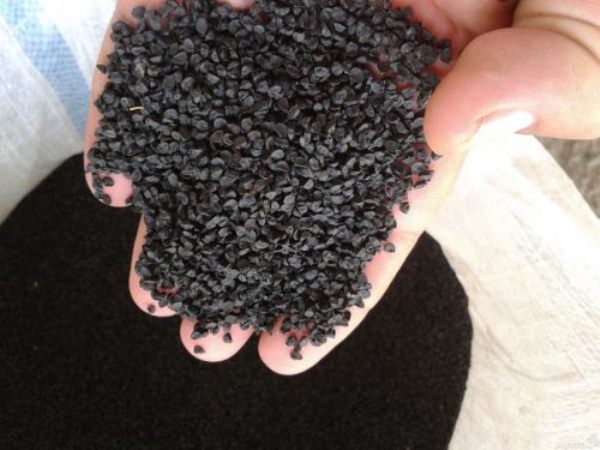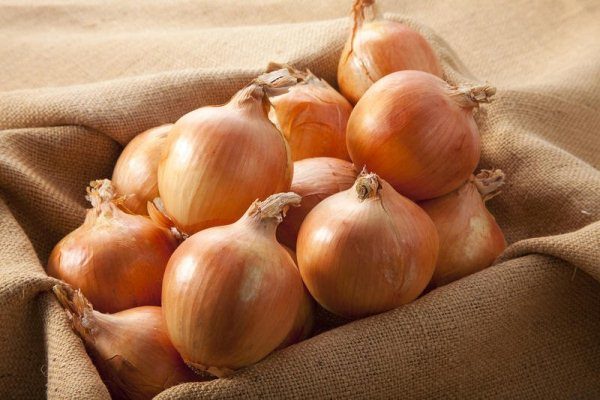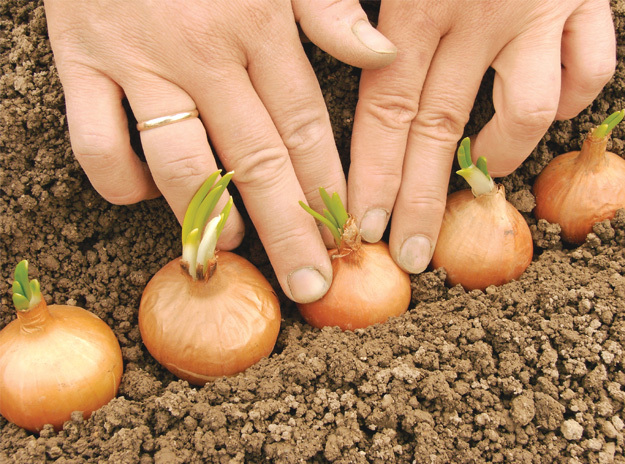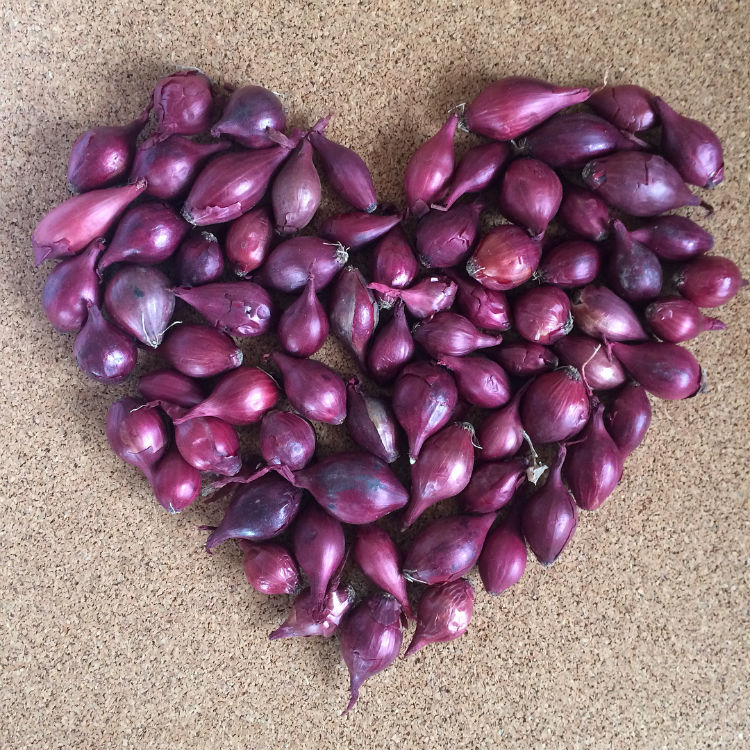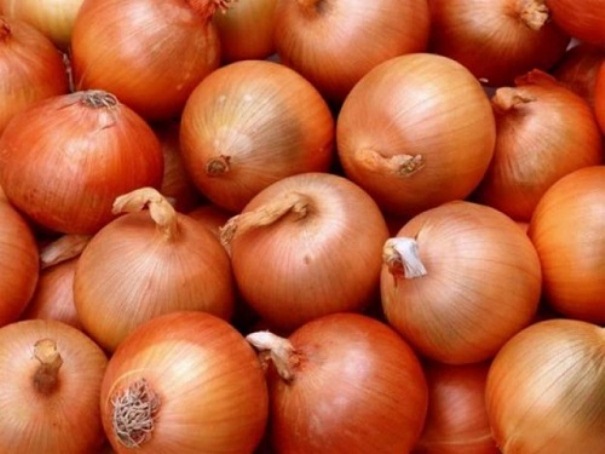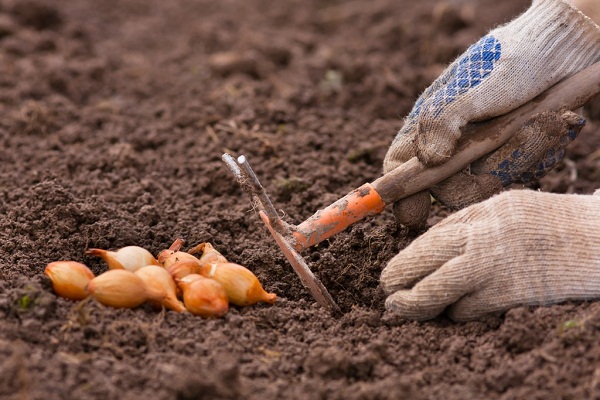Content:
Onions Stuttgarter belongs to the old proven varieties that have won great confidence among gardeners around the world. For more than one decade, he has been holding a leading position and occupies an honorable place in the beds of summer residents and professional farmers. With its unpretentiousness, high yield and excellent taste and marketability, this onion confidently pushes competitors into the background. However, there are certain nuances in its cultivation.
A bit of history
The history of the origin of the onion is rooted in antiquity. The first mentions of him were contained in the Bible, and he is also depicted on the walls of the Egyptian pyramids. In Russia, this plant has been known since the 12th century. During this period, many new varieties and varieties were bred, but the popularity of onions did not fall at all, but even vice versa. It has found widespread use in cooking, and magicians and shamans still use it in their rituals. No house is complete without onions and dishes with its use.
The onion of the Stuttgarter Riesen variety was bred in Germany, and entered the Register of Breeding Achievements in 1995. The well-known company "Zamen Mauser Quedlinburg" was engaged in the development. To obtain a novelty, several varieties were taken with similar characteristics, from which the breeders identified only the best qualities. It is noteworthy that this company became famous for not releasing "raw" and unfinished material on the market. All of her products are perfect and almost perfect. Only Holland, which has won an impeccable reputation on the world market, can compete with this eminent manufacturer.
Stuttgarter has shown increased resistance to genetic mutations and has not lost its varietal qualities over the years of its existence. In addition, the variety has shown extraordinary ecological plasticity, due to which its distribution area has expanded significantly. In Russia, it is cultivated in all regions, easily adapting to certain climatic conditions.
Variety characteristics
Stuttgarter won popular love due to its not very sharp taste, unpretentious care and good yield. Planting can be carried out both in autumn and spring. For this, both sets and seeds are used. Grown for greens and for the purpose of obtaining heads. The Stuttgarter variety belongs to the early ones, therefore, when planting seedlings, the crop can be harvested after 70 days, and if you sow seeds, you will have to wait 3.5 months.
Stuttgart onions can be planted in almost any soil, except sour. However, a rich harvest and large heads can be grown only if the planting was carried out in fertile soil, black soil or loam. The average weight of one head is 150 grams, but there are specimens up to 240 grams. The largest bulbs are obtained after planting in winter.
The head of the Stuttgarter variety is covered with yellow-brown scales. Its shape is rounded, slightly flattened in the lower and upper parts. The description says that the taste of the onion is not too spicy, pleasant. Its application is universal. The variety is used not only for preparing fresh salads, but also for preservation, drying, freezing.
Onion sevok Stuttgarter Riesen in Russia is sold mainly of Dutch or Volga production. You can also buy nigella, from which you subsequently grow your own set.The ripening time of a vegetable can vary, depending on the region, as well as climatic conditions. The yield of the variety is 4 kilograms per square meter.
The characteristic of Stuttgarter suggests that its heads contain a lot of ascorbic acid, as well as sulfurous medicinal compounds. The dry matter content is high. The variety ripens perfectly, is suitable for storage, has good keeping quality. It is preferable to plant the fine fraction before winter, since it will most likely dry out by spring.
This variety is prone to neck rot, especially if wet and rainy weather is established. Also, plantings can be affected by downy mildew. Planting Stuttgarter onions in early spring increases the plant's resistance to fungal diseases.
During the existence of the variety, the Dutch varieties of onion sets Stuttgarter were bred, which are supplied to Russia. The most famous among them is Stanfield. It appeared in the state register in 2015. It has a thin neck that is not subject to decay, increased resistance to fungal diseases and excellent keeping quality. The shape of the bulbs is even, attractive.
Features of agricultural technology
Every agricultural technician knows that fertile soil should be chosen to obtain the maximum yield of the Stuttgarter onion. Plants do not like the abundance of mineral salts, therefore it is better to use organic fertilizers for their cultivation. The best predecessors are:
- potatoes;
- tomatoes;
- cucumbers;
- legumes;
- cabbage.
For sowing Stuttgarter onions, it is advisable to use fresh seed. When purchasing it in a store, be sure to pay attention to the expiration date. It is best if it ends not this year, but next year. Before sowing onion seeds in the garden, they should be warmed up near the battery, and then soaked in warm water for a day. It is recommended to add potassium permanganate to it in order to carry out disinfection at the same time.
The correct approach to growing Stuttgarter onions is to start preparing the plot ahead of time. All soil characteristics are taken into account and measures are taken to improve them. If the land in the garden is depleted, then it is necessary to fertilize it with rotted manure or humus. Acidic soil is deoxidized by adding lime, dolomite flour or ash. The latter will also serve as an excellent fertilizer for the bulbs. Preparatory work is carried out in the fall, even if the Stuttgart bow is planned to be planted only in the spring. In the future, it will only be necessary to loosen the bed and make grooves on it, the distance between which is left at least 10 cm.
It is necessary to plant Stuttgarter seeds to a depth of no more than 2 cm, a gap of 1.5 cm is made between them.After sowing, the soil is slightly compacted so that voids do not form around the seed.
Onion sets Stuttgarter Riesen can also be planted in spring or autumn. In the autumn, it is better to plant a trifle that will not be stored until spring, and by the beginning of summer it can yield excellent young heads and greenery. In order to plant a small seed, the garden should be prepared immediately after harvesting the previous plant. Onions are planted a month before the expected onset of cold weather, so that the heads have time to take root well.It is advisable to cover Stuttgarter with hay, fallen leaves or spruce branches to avoid freezing from snow.
Reviews of gardeners indicate that the most daring and desperate managed to grow Stuttgarter, planting sevok at the end of August or September. Before the frost began, the plants had time to release several leaves. However, in this case, the beds need to be covered with such material as lutrasil or spunbond. In extreme cases, the fallen leaves are laid in a very thick layer. Light frosts are not scary for the plantings of Stuttgarter, and a layer of snow will additionally protect from frost. With the onset of the thaw, the bulbs will start growing again.
In order to grow the first crop faster, it is recommended to warm the seedlings before planting near the battery for 8 hours, and then soak them in warm water with potassium permanganate for a day. A little agave juice can be added to stimulate root growth in Stuttgarter onions. It costs no more than a couple of centimeters to deepen the bulbs. Planting is done in rows, between which a distance of 25 cm is left.The gap between the bulbs should be 15 cm.
When growing Stuttgarter onions on a feather, turnips or large sets are selected for planting. They are stuck into the soil almost without gaps, and they are not sprinkled with earth on top. To make the distillation process faster, you can cover the planting with cellophane from above. Planting is allowed both in open ground and in a greenhouse.
Care
Onion sets Stuttgarter after planting does not need special care, but some activities need to be done. After a couple of weeks, the first feeding is carried out with a solution of mullein or chicken droppings in a ratio of no less than 1:10. Otherwise, there is a risk of scalding the heads. In no case should fresh manure be used for fertilizing. This leads to head cracking, the appearance of pests. During the growth period of Stuttgarter bulbs, plants need phosphorus and potassium. Therefore, after a month, planting is watered with potassium salt, urea or superphosphate. The third top dressing is carried out using a complex mineral fertilizer.
The lack of certain trace elements can be determined by the external state of the Stuttgarter onion. A slow build-up of green mass indicates a nitrogen deficiency. Wrinkled and prematurely aging foliage indicates a lack of potassium. Blackened tops of feathers indicate a lack of phosphorus.
During the entire growing season, it is necessary to keep the beds clean and remove weeds in a timely manner. So that the roots have good air access, the soil is carefully loosened. In this case, the forming bulbs must not be damaged, otherwise they will get an infection. Watering is carried out taking into account weather conditions. If it is hot, then more frequent irrigation is required for Stuttgarter, but after that it is necessary to loosen the beds. In early July, watering should be less intense, and a couple of weeks before the expected harvest, it is completely stopped.
Despite the fact that Stuttgarter is resistant to diseases and pests, experts recommend planting several dill and marigold bushes on its garden bed in order to scare off pests.
Harvesting and storage
Greens and young heads of Stuttgarter onions are eaten throughout the season. But the full harvest is carried out only when the bulbs have reached the stage of technical ripeness. During this period, the leaves turn yellow and dry out. The neck also begins to dry out, and the scales on the heads themselves acquire a characteristic color. It is impossible to overexpose the ripe crop of Stuttgarter in the ground, because it can start to germinate again or rot after the first rain.
A fine sunny day is chosen for harvesting.The bulbs are dug up, folded in small piles in the garden or spread in a thin layer and dried. If weather conditions do not allow this, then a well-ventilated canopy is suitable for drying Stuttgarter onions. The roots and leaves should dry well. After that, the harvested crop is sorted.
Store only healthy, well-ripened Stuttgarter bulbs without obvious damage. Their roots and dried leaves should be cut off and placed in boxes of sand. There should be no sudden temperature changes in the storage room. A basement with moderate humidity is ideal for these purposes. Under the right conditions, Stuttgarter bulbs keep well until spring. Sevok is stored in a similar way, only its safety is periodically checked. Otherwise, due to temperature fluctuations or high humidity, it may sprout.
Advantages and disadvantages of the variety
Stuttgarter onions, like any other, have a number of advantages and disadvantages. Its advantages include:
- high productivity;
- undemanding care and landing;
- early ripening of the crop;
- universal use;
- excellent keeping quality;
- excellent commercial qualities and attractive presentation;
- suitability for long distance transportation;
- increased resistance to most diseases and pests;
- seedlings can be grown for the purpose of obtaining greenery.
With all this, Stuttgarter is not without some shortcomings. According to the reviews of gardeners, in conditions of a damp and rainy summer, plantings are often affected by rot. The flattened shape of the heads is not very convenient for cleaning and slicing. However, most are ready to close their eyes to these little things, because they are a hundredfold offset by the huge benefits.
It outperforms its competitors in many respects, and if there is any minor flaw, it is simply not paid attention to. The variety has been tested by time, over which its characteristics do not deteriorate. Onions Stuttgarter do not need any special care, they can produce a bountiful harvest even when grown under standard conditions. Great for getting an early harvest, even a novice gardener can grow it.
